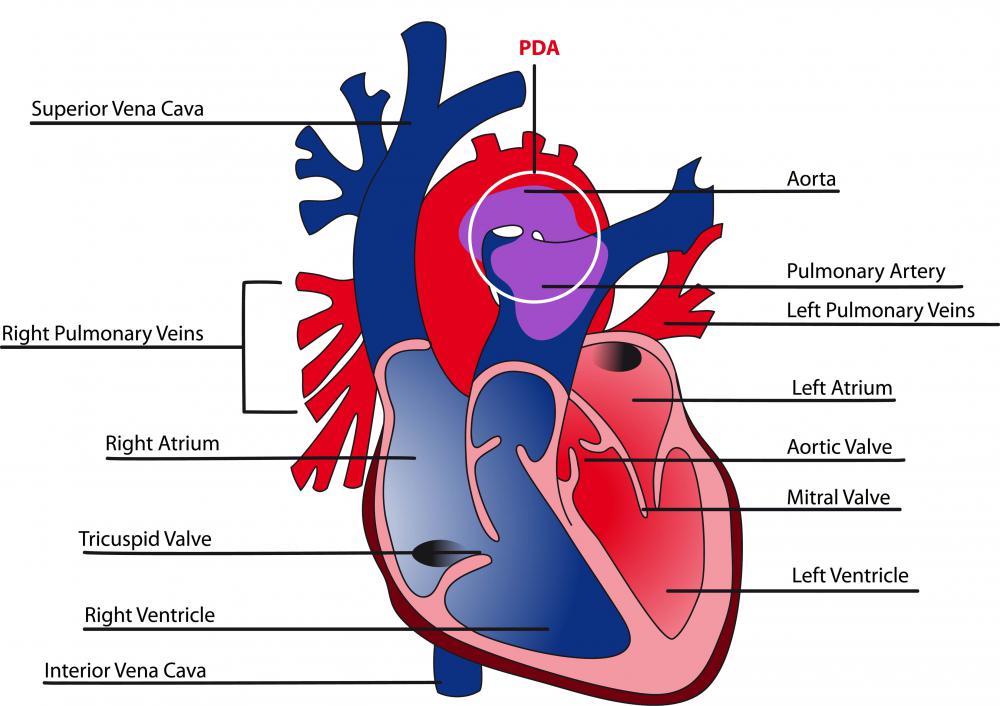At WiseGEEK, we're committed to delivering accurate, trustworthy information. Our expert-authored content is rigorously fact-checked and sourced from credible authorities. Discover how we uphold the highest standards in providing you with reliable knowledge.
What is a Heart Valve?
A heart valve is a passageway in the heart, a functioning connection point between one area of the heart and another. Valves have the important task of opening and closing so that blood moves along the circulatory path. These connection points are divided into two categories called atrioventricular and semilunar. Atrioventricular valves form the passageway between the atria and the ventricles, while semilunar valves are attached to the tops of the ventricles and control the flow of blood that enters the pulmonary artery and the aorta.
The two atrioventricular valves each have a distinct name. Between the right atrium and right ventricle lies the tricuspid valve, and the mitral valve is located between the left atrium and left ventricle. The term tricuspid is descriptive for the right-sided valve because it has three cusps or leaflets that open and close as the heart beats. The mitral valve is distinct because it has only two leaflets or cusps, but its powerful action in the healthy heart forms a tight seal when the valve is closed.

An atrioventricular heart valve has a specific “operating system.” The valve is connected to small tendons (chordae tendineae) that attach to muscles called the papillary muscles. These muscles contract, pulling on the “heart strings” and thus pulling shut the leaflets of the valve, which additionally keeps the leaflets from inverting due to blood flow pressure. In a relaxed state, the leaflets naturally open and blood flows from atrium to ventricle.

The semilunar valves both possess three cusps and they are attached to right and left ventricles. They function in a slightly different manner than atrioventricular heart valves. Both the pulmonary valve, attached to the right ventricle and the aortic heart valve, attached to the left, sense changes in pressure between the ventricle and the grand vessel into which it pumps blood. For example, the aortic heart valve opens once the left ventricle has a higher pressure than the aorta. Similarly, the pulmonary valve opens to let blood pass through when right ventricular pressure exceeds that of the pressure in the pulmonary artery.

Cardiac health depends on every heart valve functioning normally, and there are many problems that can arise in these valves that may require treatment or correction. Some congenital heart defects result in absent, stenotic (narrow) or insufficient valves. About 8 in 1000 people have a congenital heart defect and many of these affect at least one heart valve. Moreover, about 1% of the population has a bicuspid aortic valve, which can lead to regurgitation, where blood flows back from the aorta into the left ventricle. Problems with the mitral valve or tricuspid can exist or may develop later in life. Aging or sometimes bacterial infection affects valve function, too.
Fortunately, there are repairs for defective or damaged heart valves. Sometimes a valve is directly repaired and other times replaced. Common replacement strategies use bovine, porcine, donor or mechanical valves. These replacements have good outcome rates, though tissue valves may require re-replacement.
AS FEATURED ON:
AS FEATURED ON:













Discuss this Article
Post your comments